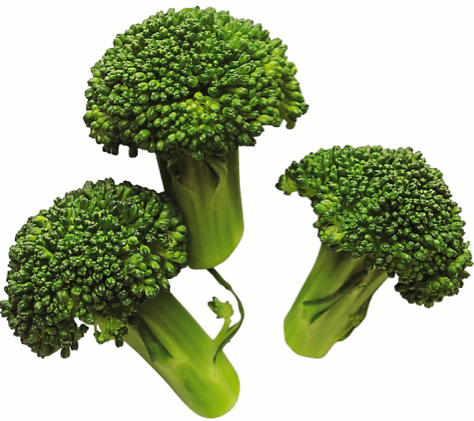SEPTEMBER 2013
OSTEOPOROSIS

In one study, it was found that “eliminating meat from the diet cuts the urinary calcium loss in half. Cutting sodium intake by half can reduce calcium requirements by 160 mg per day.” The more protein that is taken in, the more calcium that is lost.
The Physicians Committee for Responsible Medicine (PCRM) reports, “The average calcium intake in Singapore is 389 mg/day, less than half of the recommended daily allowance in the U.S. Yet the fracture rate in Singapore is five times lower than that of the U.S., where the calcium intake is much higher.”
Despite clear scientific proof that calcium is not the answer to osteoporosis, in January 1997, a new advertising campaign promoting milk consumption was launched, sponsored by the National Fluid Milk Processor Promotion Board. The PCRM lodged a complaint with the Federal Trade Commission in Washington, DC, pointing out that, “Increasing milk consumption is one of the weakest possible strategies for protecting the bones and to suggest otherwise is dangerously misleading.”
Bone density machines can help determine the mineral density of your bones. But, in general, it is a good idea to support your bone health as you age regardless.
Here are 3 ways to help support your bone health:
1. Calcium. Calcium is crucial for strong, healthy bones. Not all calcium supplements are equal and some use forms of calcium not easily absorbed by the body. Instead, try adding in calcium rich foods such as leafy greens- bok choy, broccoli, collards, Chinese cabbage and kale. These have greater bioavailability than the calcium found in milk. Spinach, although high in calcium, is not a good source of calcium because the calcium binds to oxalates and is therefore poorly absorbed. Decrease your risk of osteoporosis by restricting animal protein, salt and smoking, while flooding the body with calcium from vegetable sources, along with the proper enzymes to lodge this calcium in the bones.
According to the vegan society, if protein intake is inadequate, (less than 0.8 g of protein per kg of body weight), the body lacks the building blocks for muscle and bone, and growth hormones which stimulate muscle and bone building will decline to undesirable levels. Consuming less than the recommended amount of protein in order to reduce calcium loss is not the correct approach. Individuals with a low calorie intake are particularly at risk of getting insufficient protein.
The choice of protein source can make a great deal of difference. A person trying to increase protein intake using meat or fish will lose 25 mg of calcium from their body for every 100 g eaten. In contrast, a 100 g portion of beans (by dry weight) has an approximately neutral effect on calcium balance while providing the same amount of protein.
2. Trace minerals. Our food supply does not contain the rich mineral content it did 50 years ago. Modern agricultural practices have stripped the soil of its nutrients, leaving the foods we eat in a less nutritious state. Trace minerals provide a broad spectrum of minerals that we need to maintain optimal health.
3. Essential Fatty Acids. The omega oils help lubricate joints and reduce inflammation in the tissue and muscle surrounding our bones. Eat more wild caught non-farm raised fish, olive and flaxseed oils, nuts, and leafy green vegetables.
4. Exercise. Exercise can help build strong bones and slow down bone loss. It is best to have a consistent exercise regimen throughout your life, rather than exercising in small bursts. Alternate strength training with resistance exercise. Always check in with your doctor before beginning an exercise routine.
5. Vitamin D. Vitamin D is an essential nutrient for bone health. Because of our modern lifestyles, we do not get the proper amounts of vitamin D from our environment. Twenty minutes of sun exposure will give you the boost you need, however, when sun exposure is not possible, talk to your Naturopathic Doctor about ways to supplement Vitamin D in your diet.
References
Pizzorno, Joseph E., and Michael T. Murray. 1999. Textbook of Natural Medicine. Edinburgh: Churchill Livingstone. Gerson, Charlotte; Bishop, Beata. Healing the Gerson Way. 2007. California: Gerson Health Media.
Vegan Society. Diet and Bone Health. Stephen Walsh, PhD.
VEGAN SOURCES FOR CALCIUM
Animal protein actually causes calcium loss. Here are some non-animal protein calcium sources:
1. Broccoli, steamed (1 cup = 180 mg Ca)
2. Collard greens, steamed (1 cup = 357 mg Ca)
3. Turnip greens, steamed (1 cup = 250 mg Ca)
4. Dandelion greens, steamed (1 cup = 294 mg Ca)
5. Swiss chard (1 cup = 139 mg Ca)
6. Kale, raw (1 cup = 90 mg Ca)
7. Blackstrap molasses (2 tbsp = 274 mg Ca)
8. Orange (1 medium sized = 52 mg Ca)
9. Figs, dried (1/2 cup = 120 mg Ca)
10. Almonds (1/4 cup = 92 mg Ca)
11. Tahini (2 tbsp = 42 mg Ca)
12. Garbanzo beans, cooked (1 cup = 80 mg Ca)
13. White beans, cooked (1 cup = 100 mg Ca)
References
Marz. Russell B. 2002. Medical Nutrition From Marz 2nd Edition. Portland: Omni Press Publishing.

RECIPE: VEGGIE QUINOA BOWL
serves 2
- 1/2 cup dry quinoa, rinsed and drained
- 3/4-1 cup filtered water, to cook quinoa (you could also cook in vegetable broth for more flavor)
- 2 tbsp grapeseed oil
- 1/4-1/2 cup chopped red or yellow onion (to preference)
- 2 cloves garlic, grated into pan
- 1/3 cup vegetable broth
- 2 cups broccoli, cut into florets
- 1 cup kale, leaves removed from stems, and broken into bite size pieces
- 1 cup collard greens, stem removed and cut in thin strands
- salt and pepper to taste
- lemon juice, if desired
- nutritional yeast (optional for cheesy flavor)

HEALTHY BONE SUPPLEMENT

References
Pizzorno, Joseph E., and Michael T. Murray. 1999. Textbook of Natural Medicine. Edinburgh: Churchill Livingstone.
HORSETAIL (Equisetum arvense)

As with most herbs, it is important to speak with your Naturopathic Doctor before adding in Horsetail to your diet. While it is available in most health food stores, it is important to find a high quality source for this herb. Your doctor will also be able to recommend dosage, especially if you are already on a calcium supplement.
References
Costa-Rodrigues J, et. al. 2012. Inhibition of Human in vitro Osteoclastogenesis by Equisetum arvense. Cell Proliferation 45(6):566-76.
Raczuk J, Biardzka E, Daruk J. 2008. The Content of Ca, Mg, Fe and Cu in Selected Species of Herbs and Herb Infusions, Roczniki Panstwowego Zakladu Higieny 9(1):33-40.
Bessa Pereira C, et. al. 2012. Equisetum arvense Hydromethanolic Extracts in Bone Tissue Regeneration: In vitro Osteoblastic Modulation and Antibacterial Activity. Cell Proliferation 45 (4): 386-96.
“Horsetail.” University of Maryland Medical Center website. (accessed July 24, 2013)
RESISTANCE EXERCISE

References
“Exercises for Osteoporosis.” Web MD Website. (accessed July 1, 2013).
Follow us on instagram
BLOG
Become an educated consumer with our Indigo Blogs and prevent dis-ease.
Our Doctors have been featured in:









